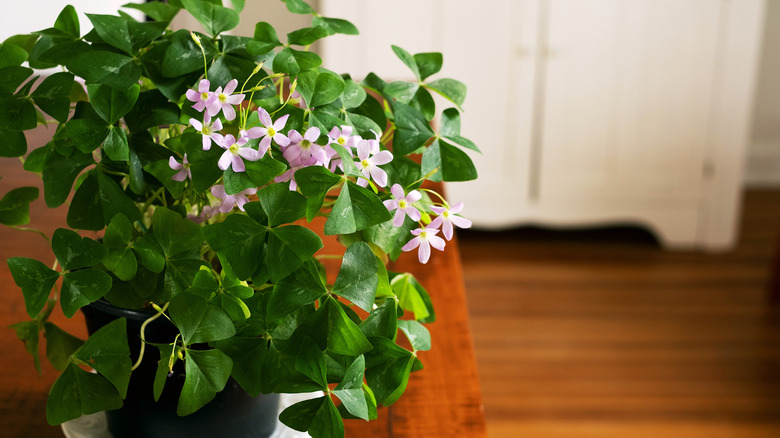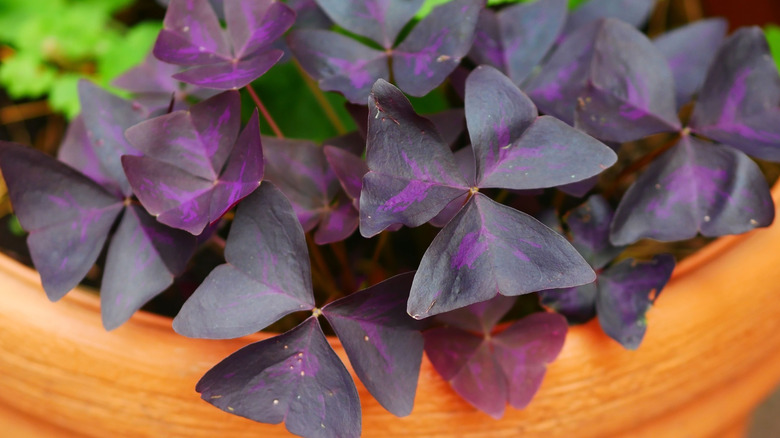How To Care For A Shamrock Plant
Can't find a lucky four-leaf clover in the yard? Bring a whole pot filled with them — or, at least, their look-a-likes — into your house with the charm of a shamrock plant (Oxalis spp.). These plants may often be associated with St. Patrick's Day thanks to their shamrock-esque shape, but some common species actually hail from South America. No matter where you live, if you've got a window with bright light and a relatively cool room, this houseplant will give you plenty of blooms throughout the winter.
Oxalis may like bright light, but this winter-blooming plant prefers mild temperatures. No hot house needed here; instead, it prefers a room that's no more than 75 degrees Fahrenheit during the day, and cools down to as low as 50 degrees at night. Winter is the shamrock plant's time to shine, so don't be worried when it starts to die back in the summer; this dormancy period is a normal part of its cycle.
These plants are not prone to pests, but aphids and white flies can possibly be a problem. You can use these methods to get rid of aphids, some of which are similar to the best ways to get rid of white flies. Despite these infrequent pests, with loamy potting soil that drains well, and monthly fertilizing during its active growing season, shamrock plants are relatively easy to maintain. It even tolerates drying out between waterings, so if you're a forgetful waterer, this could be a good succulent alternative for you.
What to know about a shamrock plant's dormancy
The shamrock plant's dormancy is normal, though this period sometimes skips a year. These plants grow from bulbs, and just like the tulips or daffodils in your yard, they need to rest. After they are done flowering, you will eventually notice the leaves start to die back in summer, shriveling and even losing their color. You can help this process along by tapering your watering until you finally let the soil dry out entirely, cut back the dead foliage, and then move the pot to a dark spot.
How long your plant will need to rest depends on which type you have. Purple shamrocks only need about a month of dormancy while other varieties need two or three months. Eventually, you will start to see new growth. At this point, you can pull the pot out of its hiding spot, resume watering, and fertilize or repot with fresh soil before sticking it back in its favorite sunny spot. If your shamrock plant is taking up your only sunny spot, consider adding these houseplants that thrive in medium light to your collection.

